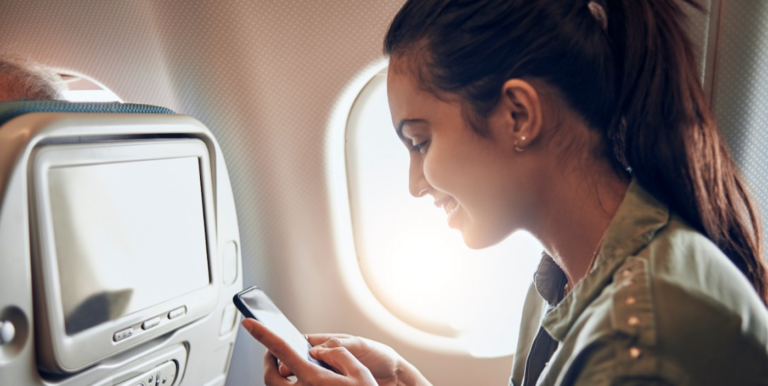North America is often considered the pioneering market of inflight wi-fi for airline passengers. North American airlines embraced the concept well before carriers in other parts of the world and, today, the vast majority offer varying degrees of passenger connectivity. However, as evidenced countless times in recent history, early movers are often leapfrogged by their competitors, especially in industries where technology develops at a feverish pace.
It’s no surprise, then, that North American airline passengers frequently complain about inflight wi-fi being inconsistent, patchy or unavailable when they need it. Whether it’s their favourite show buffering at a pivotal moment, or urgent emails being stuck in their outbox, the frustration can often reach boiling point. But why are the needs of North American airlines – and their passengers – not being met?
Providing inflight broadband at 38,000ft in the world’s busiest airspace is complex. As the first movers, a number of North American airlines have aircraft fleets equipped with first-generation, capacity-constrained equipment that is no longer fit for purpose. Legacy technology can often lead to drop-outs, black spots, slowdowns, and inevitably, passenger exasperation – all of which have been heightened by fast-growing demand for free-to-access models and real-time streaming in the cabin.
Even airlines in North America that want to upgrade to newer systems are faced with a difficult dilemma. They can either opt for a connectivity provider with adequate capacity over the continent but a compromised solution in other parts of the world, or one that offers seamless worldwide coverage, without the required depth of capacity to meet ultra-high demand over the continent.
The fact that inconsistent and poor-quality connectivity is driving dissatisfaction amongst travellers is demonstrated in recent research, which found that North American passengers are the least likely globally to use or recommend inflight connectivity based on their experiences, despite a third deeming the service “crucial”. And with the aviation industry facing its most prolonged crisis due to Covid-19, airlines are faced more than ever with a flyer’s market, where customer experience is crucial to boosting interest in travel.
A solution to this long-held pain point is now available thanks to a collaboration of two industry leaders. Inmarsat has joined forces with Hughes Network Systems to launch GX+ North America, a transformational aviation connectivity solution specifically designed to meet the needs of commercial North American airlines and passengers.
Inmarsat’s Global Xpress coverage and network resilience will integrate with Hughes’ depth of capacity over the USA to provide North American airlines with unprecedented access to consistent, reliable, high-speed connectivity on both domestic and international routes, with bandwidth sufficient to satisfy much higher uptake.
As airlines look towards recovery and how they can draw passengers and gain an edge against competitors, the power of free inflight wi-fi as a market differentiator should not be overlooked. In fact, according to research by the London School of Economics and Political Science (LSE), the lockdown experience has already formed new internet habits in the sky, with users two to three times more likely to connect and stay connected on board than they were before the pandemic.
This suggests that despite these challenging times, the appetite for innovative passenger services has not diminished – and with Gen Z set to become the largest group of passengers within the next decade, demand for digital services in the cabin shows no sign of slowing down.
In the midst of a major industry crisis, now is not the time to hunker down. If the North American commercial aviation sector is set to grow and prepare for the next generation of flyers, then it too must invest in the technologies that will help it attract and retain passengers. Inflight connectivity can no longer be viewed as “nice-to-have”, but rather a catalyst for a profitable recovery and future growth.
Prototype flights for GX+ North America are expected to begin later this year, with commercial availability scheduled for 2021.





